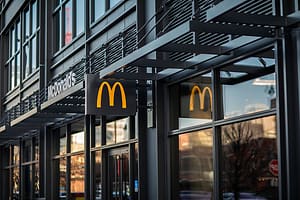Is our male-about-ale Pete Brown right? Tweet us @Londonlovesbiz
Last week saw the anniversary of the one of the strangest and little-known tragedies in the history of London.
It’s difficult to discuss sensibly: often, when people first hear of it, they can’t help laughing at the circumstances in which eight people – all women and children – met violent deaths. Time has helped dull the edge of tragedy of course, but even so, it seems awful for sane, balanced, kind people to find such a tragedy funny. But laugh they do.
Of all the stories in my first book, Man Walks into a Pub, the Meux Brewery disaster is the one I’m asked about most in interviews and at events. It excites the imagination.
In my last column, I told the story of how porter, a dark beer that was the forerunner of stouts like Guinness, became London’s dominant beer style during the eighteenth century. Like most beers at the time, porter benefited from being conditioned for up to a year before being sold. The larger the vessel in which this conditioning took place, the more consistent was the quality of the beer, and the greater the economies of scale in producing it. Conditioning barrels grew larger and larger until, inevitably, tragedy struck.
You can get an idea of the scale of these vessels in the one remaining brewery building in London that used to house them. The Brewery in Chiswell Street was built by Whitbread, once one of the UK’s largest brewers, now disappeared into the Borg-like mass of Anheuser Busch-Inbev, the world’s largest brewing colossus. Today, The Brewery is a conference centre and events space. The centrepiece is the Porter Tun Room, a vast space where hundreds of people can sit down to dinner and be entertained by mediocre comedians at their respective industry awards dinners.
When the room was first completed in 1760 it was so amazing that it featured in tourist guides, which gushed that “the unsupported roof span … is exceeded in its majestic size only by that of Westminster Hall.” The vats it held were just as impressive.
Not to be outdone, rival London brewer Henry Thrale commissioned one that was so large, he celebrated its completion by having a hundred people sit down to dinner inside the vat itself. The Meux brewery joined the game, building a porter vat which was sixty feet wide and twenty-three feet high, and seated two hundred inside for the celebratory dinner.
This vat stood in the Meux brewery on Tottenham Court Road, on the site now occupied by the Dominion Theatre and its seemingly permanent giant golden statue of Freddie Mercury.
On 17th October 2014, George Crick, a brewery worker, spotted that one of the iron hoops holding the vat together had burst off. He had seen this happen before, so wasn’t too worried about it. There were 22 hoops in total on the vat, seven of which weighed over a ton each. Even with the pressure of more than a million pints of beer sitting inside for over ten months, Crick was confident the structure of the vat would be fine.
When it exploded a few hours later, the noise was heard across London. The force of it crushed other vats standing nearby, creating a chain reaction. In total, approximately 2.5 million pints of beer crushed the walls of the brewery and swept in a tidal wave through what is now Bloomsbury, Tottenham Court Road and Oxford Street.
The brewery workers were busy trying to save what beer they could, when one of them noticed the body of Anne Saville, 53, in the flood. In the unintentional black humour of old newspapers, it is recorded that one worker, who spotted both the body and a private still from a nearby house floating past, was ‘quite certain neither were there before.’
The Times reported that “the site of the place is low and flat, and there being no declivity to carry off the fluid, in its fall it spread and sunk into the neighboring cellars, all of which were inhabited.” Added to this, the streets of the area then known as “the Rookeries” were narrow and twisted, densely populated by poor labourers and their families. With the men mostly out at work, it was mothers, children and elderly ladies who made up the victims.
Reports of the number of casualties varied widely in all the confusion. When I wrote the first edition of Man Walks into a Pub, I was seduced by a version of the tale that had grown in the telling. In that story, the victims who were crushed to death by the wave were joined by many more who flung themselves into the gutters with their mouths open, gorging on free beer until they drowned or died of alcohol poisoning. Then, when the injured were taken to a nearby hospital, the stench of beer coming from them led patients on other wards to believe there was free beer that they weren’t getting, resulting in a riot and yet more fatalities. Finally, when the bodies were laid out for identification, such a crowd came to gawp at them that the floor of the morgue collapsed, killing a few more and pushing the total death toll over thirty.
This is where the story gains its dark humour: it’s a tale of hubris and excess, an old-fashioned beer commercial gone wrong in which geezers will do anything for free beer, and end up coming a cropper as a result.
Unfortunately for the storytellers – and for my early credibility as a beer writer – none of this happened.
For the revised edition of Man Walks into a Pub, I rewrote the story from archived newspaper reports and eyewitness accounts from the days immediately following the Great London Beer Flood.
While there were rumours of anarchy and drunkenness initially – as there always were whenever tragedy befell the very poorest members of society – The Times reported that several gentlemen arrived at the scene and persuaded the crowd to be quiet to the cries of survivors trapped in the rubble could be heard. ‘The caution and humanity with which the labourers proceeded in their distressing task excited a strong interest, and deserve warm approbation’, concludes the report. This propriety obviously saved lives. In the end, the official inquest recorded only eight victims. Over the rest of this month, why not raise the odd glass of porter to remember them.
NOW READ

Coca-Cola could become the new Boris Bikes sponsor. Here are its other most contentious deals

What, no mud? John Nugent reflects on London Film Festival and sitting in silence in the dark

Car-mageddon: Congestion costs London $8.5bn a year and it’s getting worse

The best Christmas party venues in London







Leave a Comment